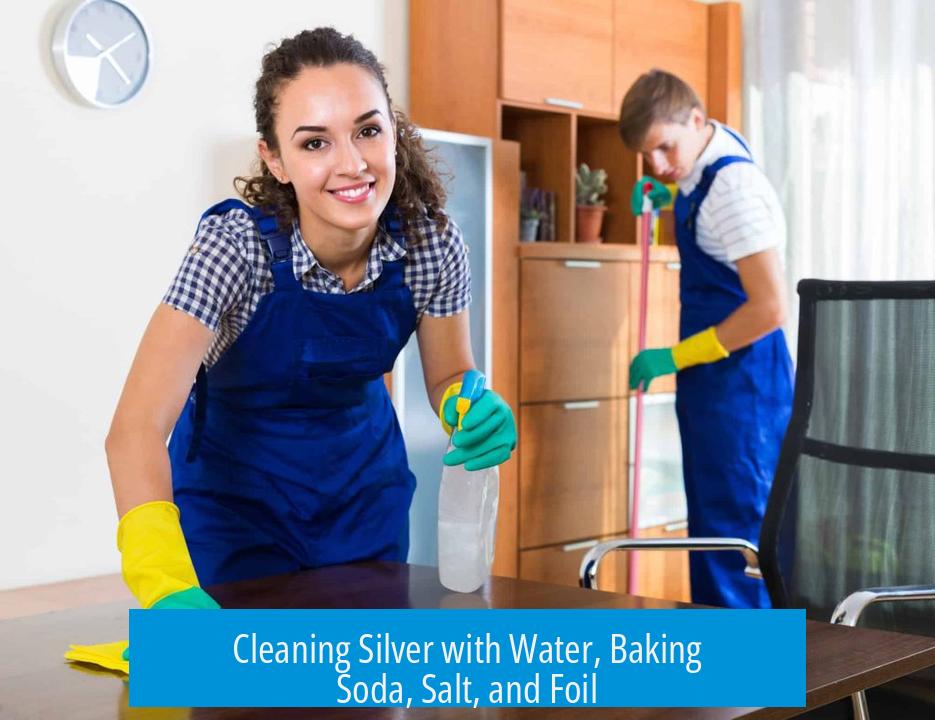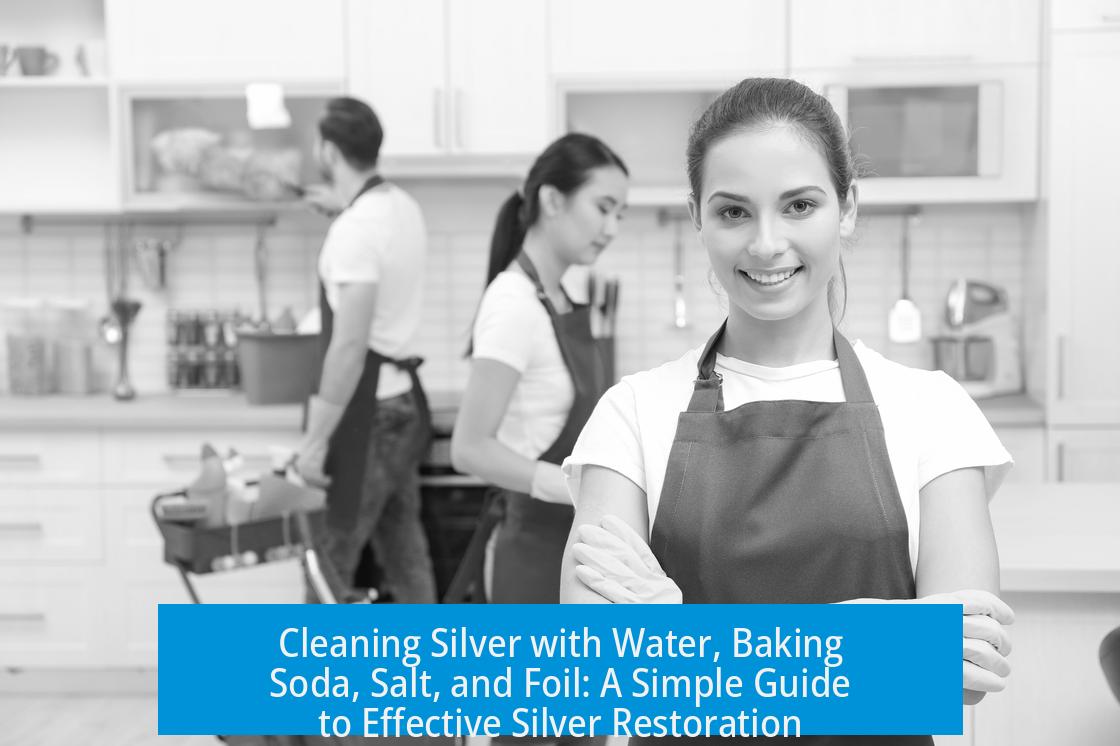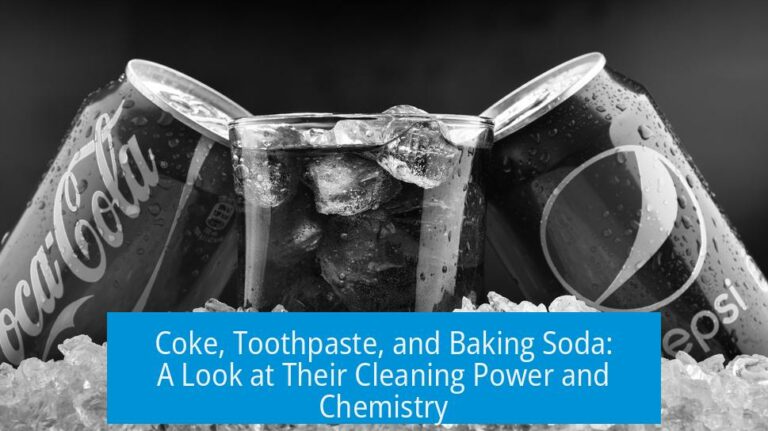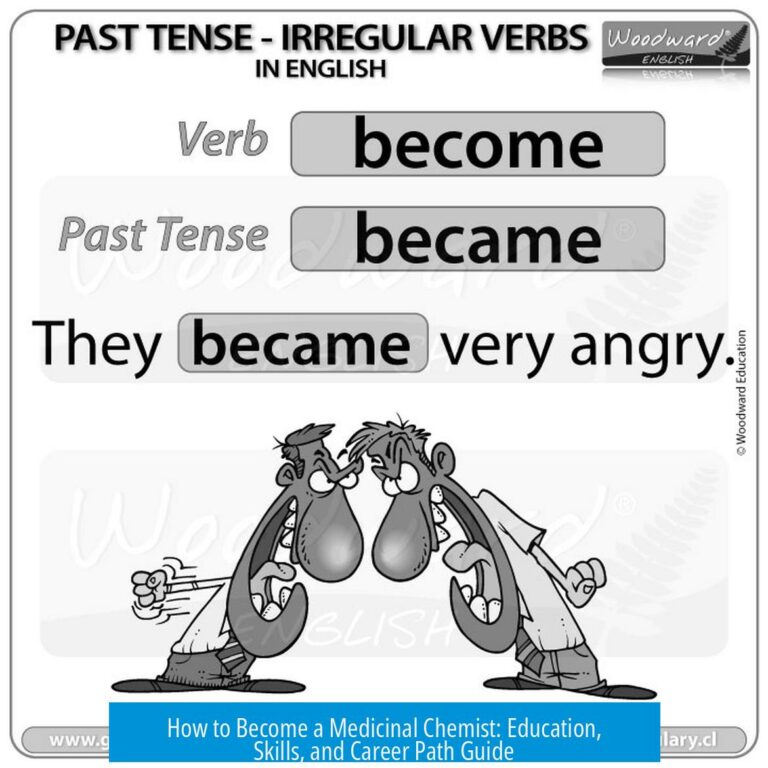Cleaning Silver with Water, Baking Soda, Salt, and Foil

Cleaning silver using water, baking soda, salt, and aluminum foil is an effective, straightforward process that removes tarnish via a chemical reaction known as an electrochemical redox. This method selectively targets silver sulfide, the main tarnish on silver, restoring the metal’s shine without abrasive scrubbing.
How the Method Works
The process involves placing aluminum foil in a bowl, adding a solution of boiling water, baking soda (sodium bicarbonate), and salt (sodium chloride), then submerging the silver item. The aluminum acts as a reducing agent.
- The silver tarnish (silver sulfide, Ag2S) reacts with aluminum in the hot alkaline solution.
- Aluminum donates electrons, reducing silver sulfide back to metallic silver.
- Simultaneously, aluminum oxidizes to aluminum ions, which go into the solution.
This redox reaction cleans the silver without physically rubbing away material.
Role of Baking Soda and Salt
Baking soda provides an alkaline environment essential for the reaction. Salt improves the solution’s ionic strength, promoting electron flow between aluminum and silver.
Neither sodium (Na+) nor chloride (Cl-) ions directly accept or donate electrons but facilitate the solution’s conductivity and solvation, enabling efficient electron transport in the electrochemical process.
What Does This Remove?

The method specifically removes silver sulfide tarnish. It converts it back to metallic silver by reversing the tarnish formation. It does not remove other surface contaminants like dirt or oils, which require cleaning beforehand.
Recommended Ratios and Preparation
| Ingredient | Typical Ratio | Purpose |
|---|---|---|
| Water | 1 cup boiling | Solvent |
| Baking Soda | 1 tablespoon | Alkalinity source |
| Salt | 1 tablespoon | Conductivity enhancer |
| Aluminum Foil | Enough to line the bowl | Electron donor |
Adjusting the baking soda and salt amounts can affect cleaning speed and effectiveness but this ratio works well for household cleaning.
Potential Enhancements and Electrical Concept
Introducing an external current between the aluminum foil and the silver item resembles electroplating or etching principles. While theoretically possible to speed up electron transfer, it requires careful control to avoid damaging the silver or aluminum foil and is not necessary for routine cleaning.
Further research or experimentation would be required before recommending this for regular use.
Additional Resources
For practical demonstrations and detailed explanations, educational videos such as those by NurdRage provide valuable insights into this chemical cleaning method.
Key Takeaways
- The foil, baking soda, salt, and hot water method removes silver sulfide tarnish through a redox reaction.
- Baking soda creates an alkaline environment; salt enhances solution conductivity.
- The reaction converts tarnish back into metallic silver without mechanical abrasion.
- Typical cleaning uses about one cup boiling water with one tablespoon each of baking soda and salt.
- Electrical enhancement is theoretically possible but not practical for routine use.
- External educational videos can clarify and demonstrate the process effectively.
How does baking soda and salt help clean silver when combined with aluminum foil and boiling water?
Baking soda and salt create an electrolyte solution that aids electron movement. Aluminum acts as a sacrificial metal. Electrons transfer from aluminum to silver oxide, reducing tarnish back to silver.
What exactly does this cleaning method remove from silver?
This method primarily removes silver sulfide, which forms tarnish. It does not strip the silver metal itself or other contaminants on the surface.
What is the recommended ratio of water, baking soda, and salt for effective cleaning?
A common mixture is about 1 liter of boiling water with 1 tablespoon of baking soda and 1 tablespoon of salt. This ratio provides enough ions for the reaction to occur efficiently.
Can connecting the silver and aluminum to a power source improve cleaning?
Applying electrical current can enhance electron flow and speed the process. This mimics electroplating or etching but requires careful control to avoid damaging the silver.
Why is aluminum foil necessary in this silver cleaning process?
Aluminum serves as the electron donor. It reacts with silver sulfide, converting it back to silver. Without aluminum foil, the redox reaction that cleans tarnish won’t proceed.





Leave a Comment